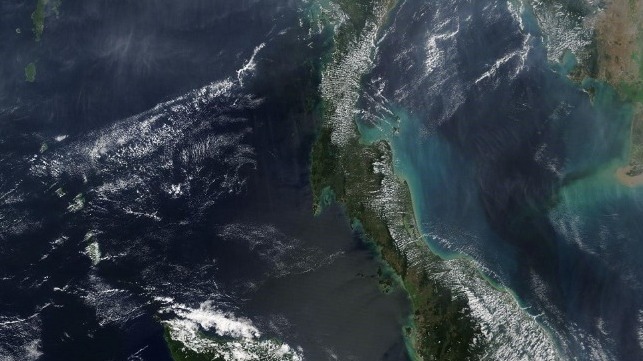Thailand Takes a Step Back From Kra Canal Proposal

Thailand is now examining ground transport alternatives to a proposed 60-mile-long canal across the Kra Isthmus, dampening China's hopes for a strategic alternative to the Strait of Malacca.
Last week, Bloomberg reported that Thailand is now considering the construction of two deep sea ports, one on each side of the isthmus, then connecting the two by road and rail. For dry goods, this arrangement could trim about two to three days of sea travel off the voyage between East Asia and the Bay of Bengal, but it would not provide a shortcut for military vessels or VLCCs. “Using an alternative route through Thailand would cut shipping time by more than two days, which is very valuable for businesses," said transport minister Saksiam Chidchob in an interview with Bloomberg.
The Strait of Malacca is one of the world's most important strategic choke points for shipping. More than 200 merchant vessels transit the waterway each day, including the oil tankers that supply China's booming demand for imported petroleum. A pipeline between Myanmar and Yunnan Province carries roughly 200,000 barrels per day from a receiving port on the Bay of Bengal into refineries in Kunming, but it supplies a small fraction of China's nine million bpd import volume. The majority of that supply comes from producers in the Middle East, Africa and Russia, and it must pass through the Strait of Malacca on its way to refining centers on China's eastern seaboard. The crowded passage creates a strategic vulnerability, as the strait's navigable channel is narrow - and in the event of a conflict, it could potentially be subject to blockade. Former Chinese President Hu Jintao referred to this problem as the "Malacca dilemma."

that matters most
Get the latest maritime news delivered to your inbox daily.
A canal across the Kra Isthmus would circumvent this choke point. The idea dates back to the 17th century, and it has taken many different routes and forms over the years. The latest proposal would span about 60 miles and cost approximately $30 billion to build. It would come with its own strategic vulnerability: the proposed waterway would physically divide central Thailand from its southern provinces, where a separatist insurgency has simmered for decades. The close involvement of China in the canal's financing and construction has also raised questions about the possibility for heightened foreign influence in domestic affairs. On a practical level, economists have also questioned whether the canal could generate enough revenue in fees to repay the massive cost of construction.
In 2018, Thailand's prime minister ordered the government to conduct a feasibility study for the canal, but Minister Chidchob's recent comments have been widely interpreted as a step back from those plans. Shortly after Chidchob's interview, the Thai government also announced a decision to delay an unpopular $724 million deal to buy two Chinese-built submarines. Thailand agreed to buy a total of three units in 2017, and the first is already under construction for delivery in 2024. The delay affects the second and third vessels.
